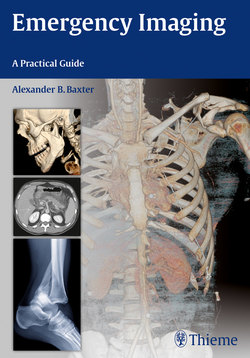Читать книгу Emergency Imaging - Alexander B. Baxter - Страница 81
На сайте Литреса книга снята с продажи.
Оглавление67
2Brain
other competing diagnostic considerations and can directly support the diagnosis of HSE. In adults, nonenhanced CT frequently shows edema and swelling of the cingulate gyri, the medial temporal lobe, and the in-ferior frontal lobe, sometimes associated with focal hemorrhage. MRI, particularly T2 and FLAIR sequences, is much more sensitive for detecting the characteristic edema pattern of HSE and should be con-sidered in the encephalopathic patient with a normal CT and no clear metabolic explanation.
Because the consequences of delayed treatment of HSE can be devastating, CSF should be obtained for definitive diagnosis by polymerase chain reaction (PCR), and presumptive antiviral therapy should be instituted as the laboratory and imaging workup proceeds (Fig. 2.28).
◆Herpes Encephalitis
Herpes simplex encephalitis (HSE) is the most common cause of sporadic viral en-cephalitis. Its clinical manifestations range from mild headache, sti neck, and fever to profound encephalopathy and coma. The virus migrates to the CNS from a fa-cial infection via either the trigeminal or the olfactory nerve, and cerebritis de-velops in the inferior frontal and medial temporal lobes. Patients often experience malaise, fever, headache, and nausea that progresses to encephalopathy with leth-argy, confusion, and delirium. Psychiatric symptoms and seizures are also common. Because HSE can mimic any toxic or infec-tive encephalopathy and early CT findings are often absent or extremely subtle, the diagnosis may be delayed.
CT aids in the evaluation of encephalitis by excluding brain abscess, neoplasm, and
Fig. 2.28a–fa–d Herpes encephalitis. (a,b) Nonenhanced CT shows subtle low-attenuation parenchymal change in the anterior cingulate gyrus and insula. (c,d) FLAIR MRI better denes high-signal edema within the olfac-tory cortex, cingulate gyrus, medial temporal lobe, and insula. Enlargement of the medial temporal lobe indicates focal swelling.
e,f Herpes encephalitis presenting with intraparenchymal hemorrhage on NCCT. Two ~ 1-cm hemor-rhages in the left inferior frontal and posterior temporal lobes with minimal surrounding vasogenic edema. Brain parenchyma is otherwise normal. (f) T2-weighted MRI shows a swollen medial left temporal lobe with increased T2 signal that extends to the left inferior frontal lobe (gyrus rectus), where a 1-cm low-intensity nodule corresponds to one of the focal hemorrhages visible on CT.
